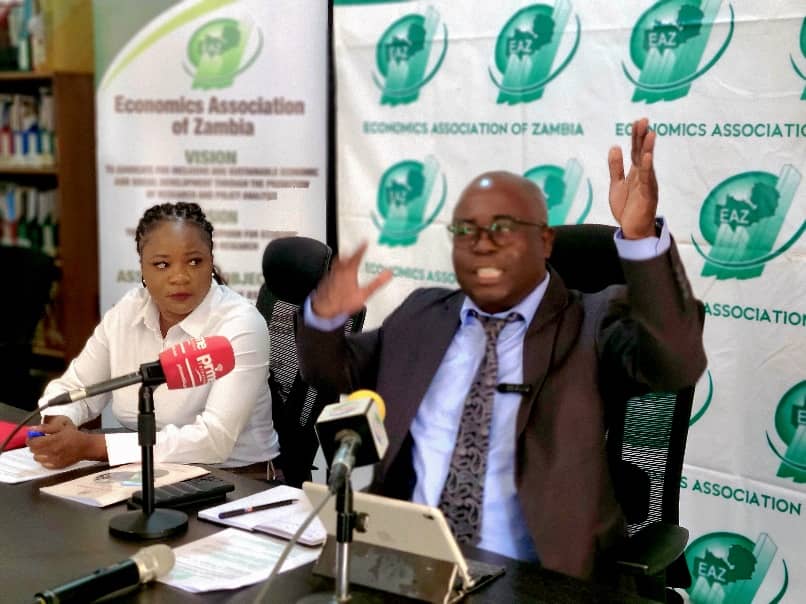Economists Warn on Budget Gaps

Key weaknesses include energy, MSME financing, and lack of financial inclusion measures
By Francis Maingaila
Lusaka, Zambia24 - (Oct. 1, 2025) — The Economics Association of Zambia (EAZ) has warned that while the 2026 National Budget is ambitious, it falls short in tackling critical structural weaknesses in energy, financial inclusion, and support for micro, small, and medium enterprises (MSMEs).
Speaking at a media briefing at the Centre for Trade Policy and Development (CTPD) in Lusaka, EAZ President Dr. Oswald Mungule said the association recommends integrating GDP and national income into budget planning, developing a national balance sheet, diversifying the energy mix, expanding mobile money infrastructure, and lowering transaction costs for low-income users.
“The 2026 National Budget is a commendable effort, but it must evolve,” Dr. Mungule said.
“It must confront the energy crisis, empower underserved communities, and catalyze private sector growth.”
Dr. Mungule highlighted the ongoing energy crisis as a major constraint. With hydropower accounting for 83 percent of installed capacity, Zambia remains highly vulnerable to climate shocks, resulting in load shedding of up to 12 hours daily.
“The budget provides no clear roadmap for renewable energy diversification or strong incentives for Independent Power Producers, while electricity access remains at only 51 percent of the population,” he said.
The EAZ recommended establishing a Renewable Energy Innovation Fund and developing strategies to expand off-grid electrification.
Rural populations, women, youth, and persons with disabilities still face significant barriers to accessing financial services.
Dr. Mungule noted that the Second National Financial Inclusion Strategy (NFIS II) is not fully integrated into budget allocations.
Mobile money adoption in rural areas remains low due to weak infrastructure and limited agent networks, limiting financial empowerment for underserved communities.
The EAZ criticized the K1.44 billion empowerment fund for MSMEs as inadequate.
High borrowing costs, stringent collateral requirements, and low digital adoption continue to constrain growth in the sector.
The association recommended legislative reforms to improve MSME financing and embedding financial inclusion into Constituency Development Fund (CDF) guidelines.
While the CDF has increased to K40 million per constituency, Dr. Mungule said it lacks clear guidelines, financial literacy programs, and effective monitoring to ensure productive use. Without these measures, resources risk being inefficiently allocated.
Dr. Mungule warned that the government’s projected 6.4 percent GDP growth is insufficient to reduce poverty and inequality, advocating for growth rates of 10 percent or higher.
He added that the budget falls short on climate resilience, with no dedicated fund for climate-smart infrastructure or sustainable housing in informal settlements — investments that could improve living conditions and equity.
“The budget represents progress, but several key issues remain unresolved. Zambia must take bold steps to strengthen energy security, financial inclusion, and private sector growth while investing in climate resilience,” he concluded.



Comments
Post a Comment